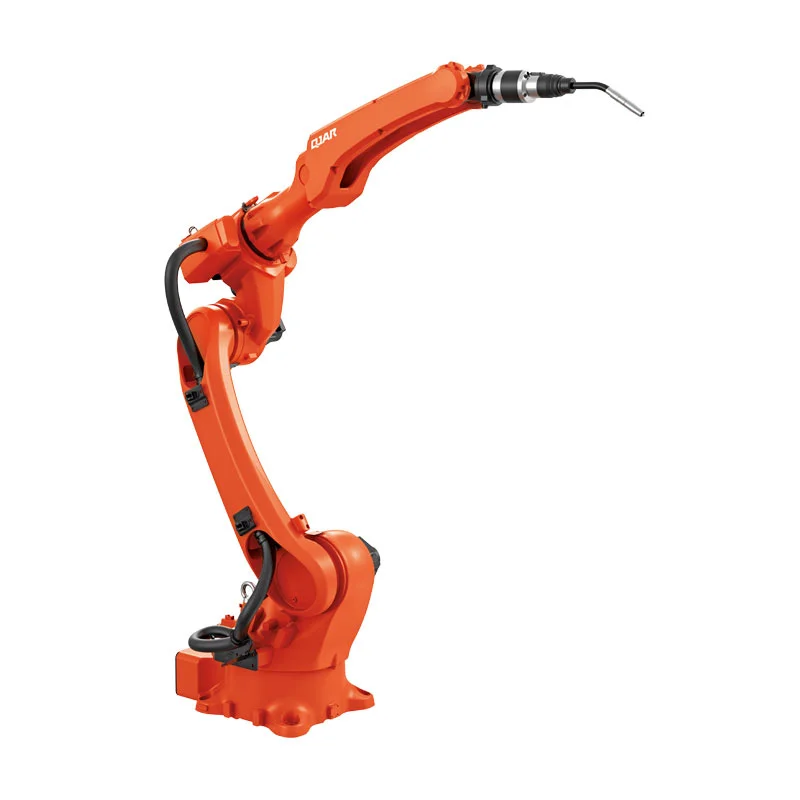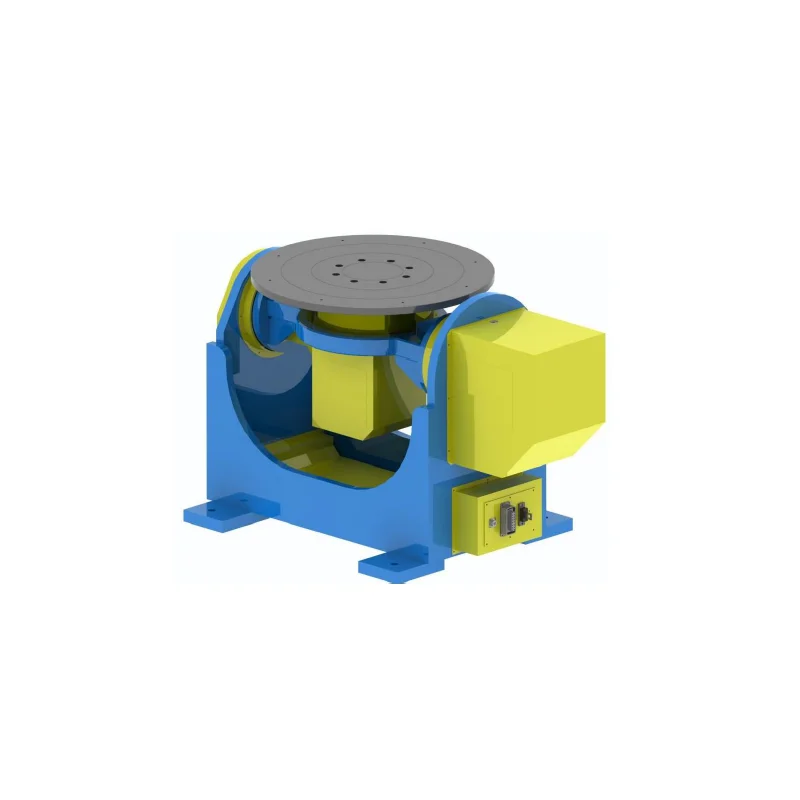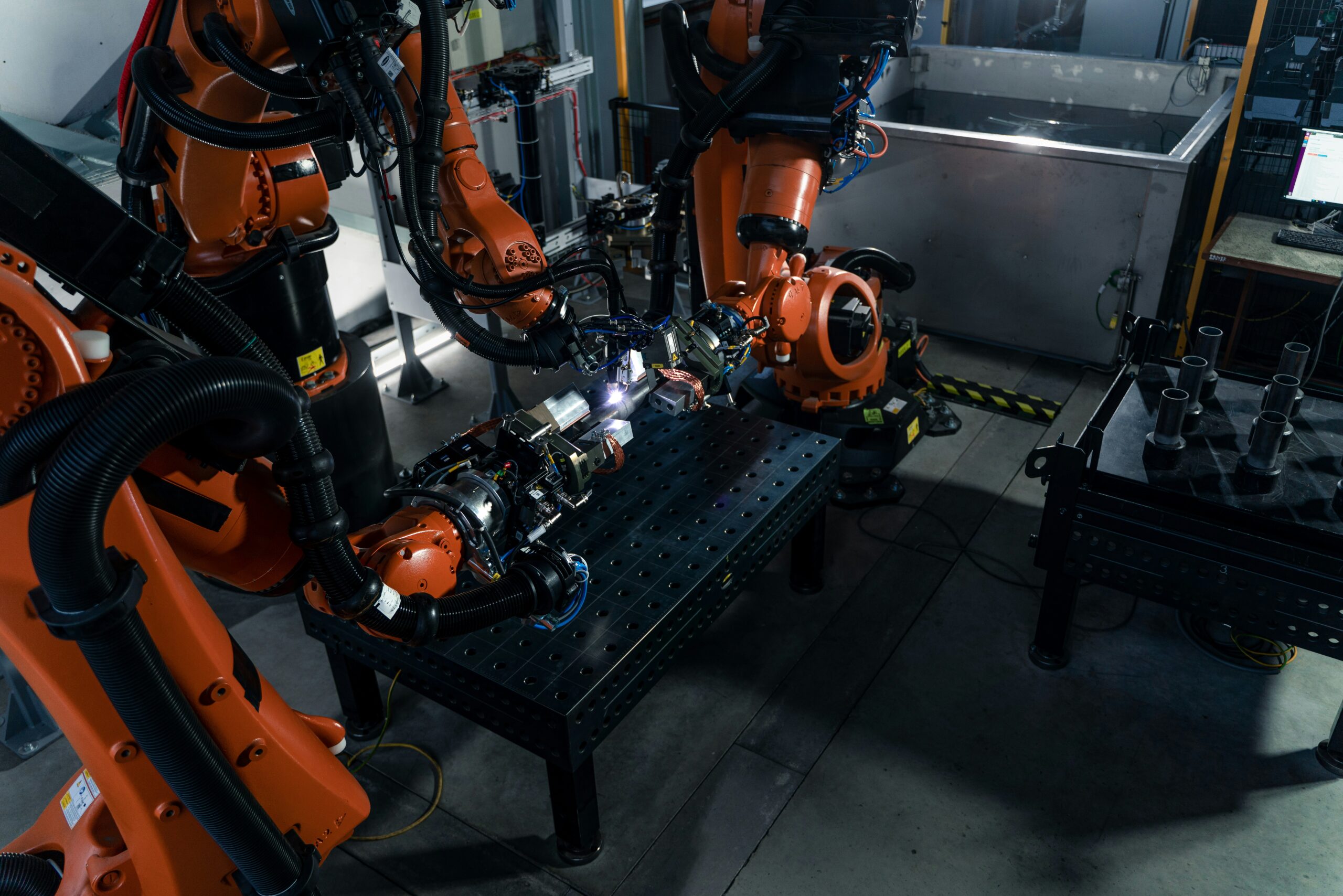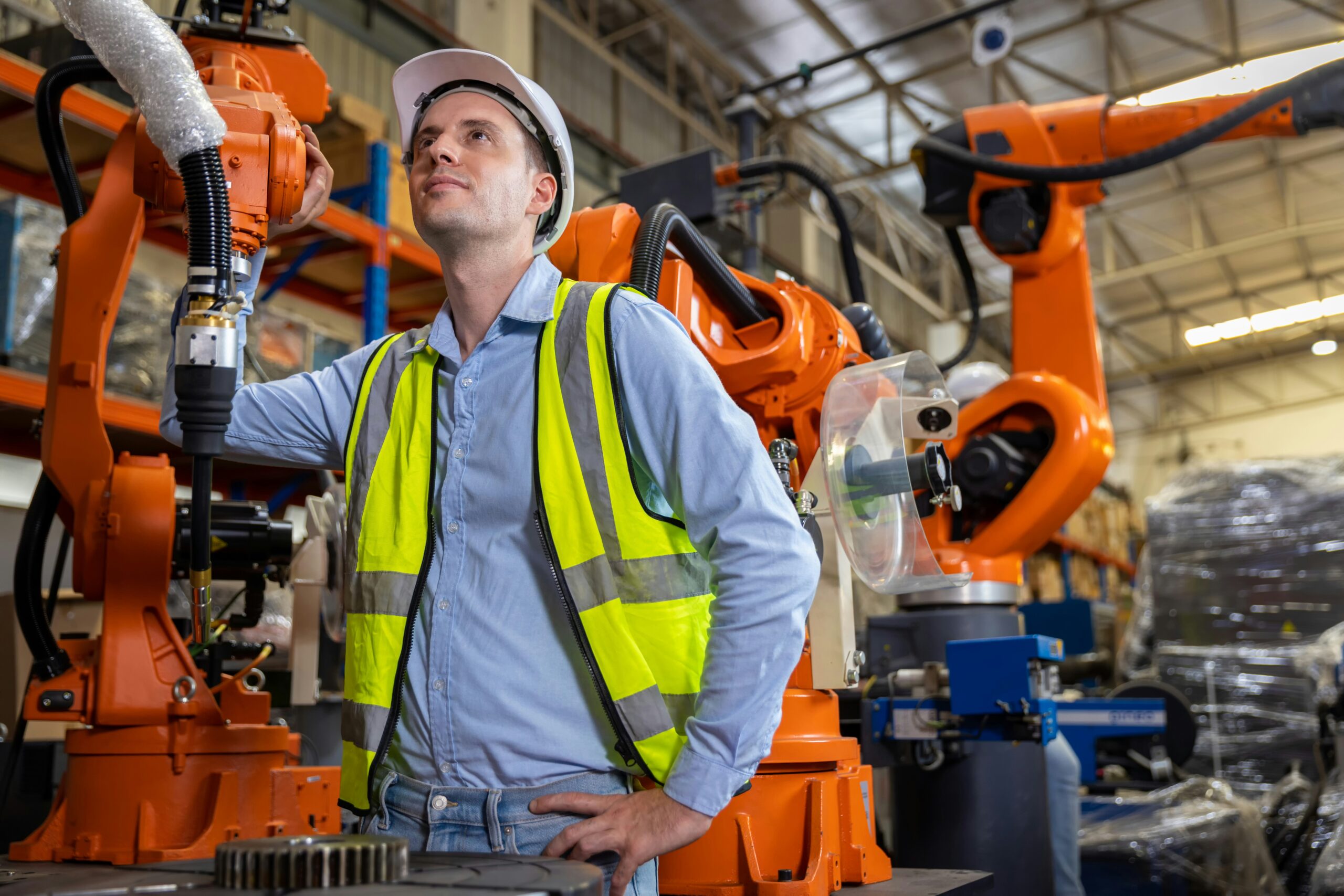In the pursuit of manufacturing excellence, precision, efficiency, and speed are not mere aspirations; rather, they function as pivotal metrics that determine survival and success. This industry has been profoundly altered by automation; welding positioners and laser welding robots are prime examples of this paradigm shift. By virtue of their capacity to optimize the complete production process from initiation to completion, these two technologies have granted manufacturers the capability to satisfy the escalating requirements for both output and quality.
The Ascent of Robotic Laser Welding
By utilizing laser welding robots, the limits of what is practicable in the field of welding have been reestablished. The QJR6-2000H laser welding robot is a noteworthy example owing to its considerable payload capacity of 6KG, ability to reach distances of 2014mm, and ±0.08mm repeat positioning accuracy. This six-axis marvel, which was created with welding precision in mind, is capable of slicing through carbon steel, stainless steel, aluminum, and copper, among other materials.
The introduction of integrated laser welding robots into manufacturing processes has caused a fundamental change in approach, leading to enhanced levels of precision and output. Through its hollow construction and U-shaped wrist design, the QJR6-2000H provides increased joint support, flexibility, and rigidity. As a result of these characteristics, the robot possesses the ability to execute intricate welding sequences with exceptional precision, rendering it a valuable resource in sectors including aerospace and automotive.
A Comprehension of Welding Positioners
Frequently disregarded are welding positioners, which work in tandem with laser welding robots to achieve impeccable welds. The burden capacities of the EVS-DWP-P series welding positioners are 500kg, 1000kg, and 200kg, respectively, to accommodate particular industrial demands. By regulating positioners to maintain a consistent positioning accuracy of ±0.10mm, ±0.12mm, and ±0.20mm, respectively, these devices ensure that workpieces are held securely and rotate precisely during the welding process.
On the basis of welding positioners such as the EVS-DWP-P series, impeccable welds are produced. They facilitate the presentation of workpieces to the laser welding robots in the most advantageous orientation, thereby decreasing cycle times and augmenting throughput. The collaboration between laser welding robots and welding positioners plays a critical role in optimizing production processes.
Positioners and Laser Welding Robots Integrated
Welding positioners like the EVS-DWP-P series are integrated with laser welding robots like the QJR6-2000H, demonstrating the advanced nature of contemporary manufacturing. The QJR6-2000H’s gear gap adjustment mechanism enhances the precision of joints, a critical attribute when manipulating intricate or delicate components. In addition to mitigating operational noise, the noise reduction special patent also improves the overall working environment.
This integration is significantly aided by welding positioners, which provide the necessary stability and accuracy for producing welds of superior quality. With its AC servo motor and RV precise reducer, the EVS-DWP-P series ensures precise positioning and high gyration stability, ensuring that even the most intricate welds are completed to the highest standards.
Technological Advancements in Laser Welding
As a result of the tremendous advancements in laser welding technology, robots such as the QJR6-2000H are leading the way. As a consequence of its antishake optimization and decreased end clearance, operational rigidity is enhanced and control error is diminished. These types of advancements have rendered laser welding robots essential in sectors where error tolerance is extremely narrow.
Similarly, welding positioners have also adapted to the advancements in technology. The EVS-DWP-P series is distinguished by a gyration support component that augments the positioner’s overall stability, thereby guaranteeing the workpiece’s rotation beneath the welding robot’s laser is both precise and seamless.
Analyses of Case Studies: Automation of Motorcycle Production Lines
Regarding practical implementations, an exceptional case study concerning the automation of motorcycle assembly lines comprised sixty-six QJRB20-1 handling robots and twenty-one QJRH4-1A laser welding robots. The implementation of these robots was critical in the automated manufacturing process of three distinct motorcycle models, which substantially increased output and decreased labor expenses.
This case study serves to illustrate not only the efficacy of laser welding robots in augmenting production but also the dependability of such systems. Passing CE tests and obtaining ISO 9001: 2015 certification, the QJAR robots exemplify the organization’s dedication to excellence. The investment of $10 million USD in testing equipment serves to underscore the criticality of providing each weld with precision and superior quality.
How to Choose the Appropriate Automation Equipment for Your Production Line
The selection of suitable equipment assumes paramount importance when firms aim to automate their production processes. Crucial considerations in the realm of laser welding robots and welding positioners encompass compatibility, payload specifications, and material composition. For instance, with its substantial reaching distance and precision, the QJR6-2000H robot is a versatile option for manufacturers working with a variety of materials and product sizes, as it is suitable for a vast array of welding duties.
Manufacturers should evaluate the power capacity, motion range, and allowable torque when assessing the technical specifications to ensure that the equipment meets their production requirements. The welding positioners in the EVS-DWP-P series offer a range of load capacities and accurate regulation. These positioners can be paired with the appropriate laser welding robot to process materials as diverse as resilient construction materials and delicate electronic components.
Automation in Welding Solutions: The Future of Manufacturing
As the industrial industry develops, the potential of automated welding solutions will grow in importance. By utilizing state-of-the-art sensors, machine learning algorithms, and data analytics, laser welding robots and welding positioners will become even more precise, flexible, and efficient. Manufacturers who keep up with the times and invest in these technologies will have a clear advantage.
More intelligence and agility will probably be added to laser welding robots as they continue to evolve, enabling these devices to adapt in real time to various welding situations and materials. Robotic synchronization with welding positioners will increase, enabling seamless production lines that can swiftly adjust to new items or design changes with the least amount of downtime.
Conclusion
The whole manufacturing process is getting more and more streamlined with the advent of laser welding robots and welding positioners. The QJR6-2000H laser welding robot and the EVS-DWP-P series welding positioners, which provide manufacturers unmatched levels of efficiency, precision, and dependability, are prime examples of integration at its best.
With every advancement in automation, manufacturers have the potential to improve the quality of their output and optimize their production lines at an exponential rate. By adopting solutions like the QJR6-2000H and EVS-DWP-P series, organizations are investing strategically in their future competitiveness and success in the fast-paced manufacturing industry, not just improving their current operations.




